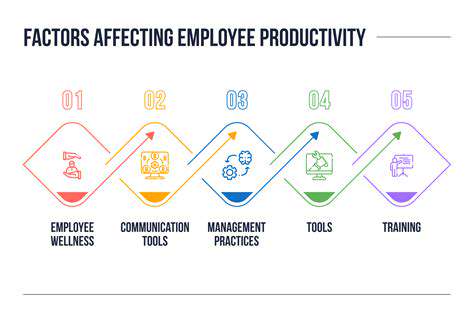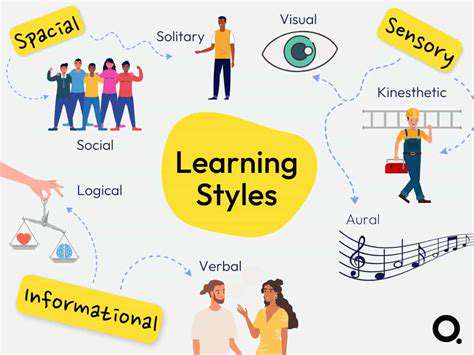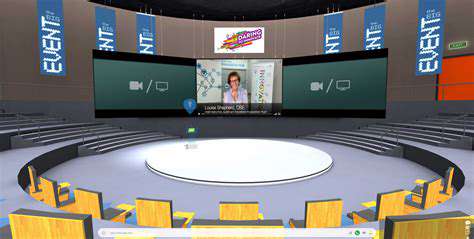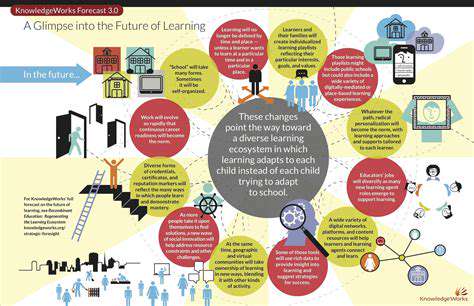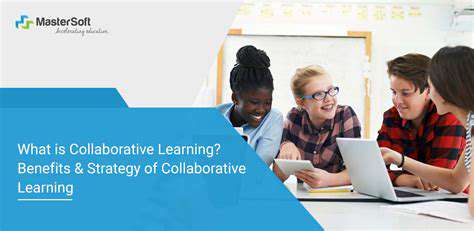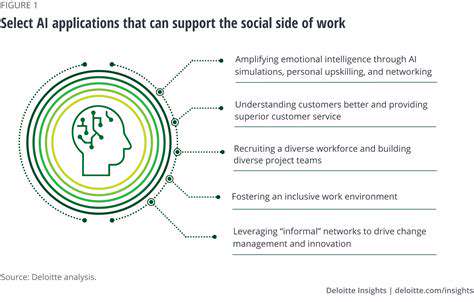The EdTech Imperative: Why Technology is Non Negotiable in Education
Traditional Limitations in Education
Traditional educational methods, while valuable in some contexts, often fall short in addressing the diverse learning needs and aspirations of today's students. The one-size-fits-all approach, relying heavily on lectures and passive learning, can leave many students disengaged and struggling to grasp complex concepts. This rigid structure often fails to cater to different learning styles, pacing, and individual learning preferences, potentially hindering academic progress and fostering a sense of frustration. Furthermore, the constraints of physical classrooms and limited resources can restrict the scope of learning experiences, making it challenging to provide engaging and enriching educational opportunities for all.
The rapid evolution of technology and the increasing complexity of information require a more dynamic and adaptive approach to learning. Simply maintaining the status quo in educational practices will not equip students with the skills and knowledge necessary to thrive in the 21st-century global landscape. The traditional reliance on textbooks, chalkboards, and limited interaction can create a disconnect between learning and real-world application, hindering students' ability to apply their knowledge in practical scenarios. This lack of adaptability often leads to a gap in practical skills development, making it imperative to consider innovative solutions that address the limitations of traditional methods.
The Power of EdTech Integration
EdTech, encompassing a broad range of digital tools and platforms, offers a powerful solution to bridge the gap identified in traditional approaches to education. By integrating technology into the learning process, educators can create more engaging and personalized learning environments that cater to individual student needs and preferences. Digital resources can offer interactive simulations, virtual labs, and personalized learning pathways, enabling students to learn at their own pace and explore concepts in a more dynamic and interactive manner. This tailored approach enhances understanding and fosters a deeper engagement with the subject matter.
EdTech solutions can also address the limitations of traditional resources by providing access to a vast repository of information, multimedia resources, and expert opinions. This expanded access to knowledge empowers students to explore diverse perspectives, build critical thinking skills, and develop a deeper understanding of complex topics. Furthermore, EdTech tools can facilitate collaboration and communication among students and educators, fostering a more inclusive and interactive learning environment. By effectively leveraging these tools, educators can create a more engaging and effective learning experience for all students, enabling them to reach their full potential.
Technology-driven learning platforms can also track student progress and offer personalized feedback, allowing educators to tailor their instruction to address specific learning gaps and strengths. This data-driven approach to education allows for a more targeted and effective learning experience, ultimately fostering a more efficient and enriching learning journey for every student. The integration of EdTech empowers both educators and students to embrace the opportunities presented by the digital age and prepare for the challenges and opportunities of the future.
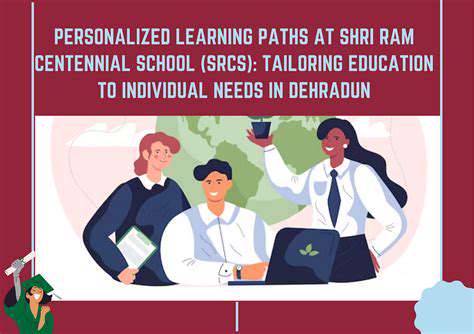
Enhancing Engagement and Motivation: Making Learning Fun and Interactive
Creating Engaging Learning Environments
A key element in enhancing engagement and motivation is the creation of a dynamic and stimulating learning environment. This involves moving beyond traditional, passive learning models and embracing interactive methods that cater to diverse learning styles. For example, incorporating gamification elements, like points, badges, and leaderboards, can significantly increase student motivation and encourage active participation. This approach fosters a sense of accomplishment and friendly competition, transforming the learning experience from a chore into an enjoyable activity.
Furthermore, incorporating technology tools like interactive simulations and virtual reality experiences can make learning more immersive and captivating. These tools allow students to visualize abstract concepts, experiment with real-world scenarios, and explore complex ideas in a safe and engaging environment. Students are often more motivated to learn when they can actively manipulate and interact with the material presented to them, rather than simply passively receiving information.
Utilizing Technology for Interactive Learning
Technology plays a crucial role in enhancing engagement and motivation. Interactive educational software and applications can provide personalized learning experiences, adapting to individual student needs and paces. This individualized approach ensures that every student receives the support and resources necessary to succeed, fostering a sense of ownership and control over their learning journey. Effective use of technology can also allow for real-time feedback and assessment, enabling teachers to identify areas where students may be struggling and offer targeted support.
Interactive whiteboards, online forums, and collaborative projects are powerful tools that can foster a sense of community and collaboration among learners. These tools promote active participation and encourage students to share ideas, learn from one another, and develop crucial social-emotional skills. By creating opportunities for interaction and collaboration, technology can transform the classroom into a dynamic and engaging learning space.
Integrating multimedia resources, such as videos, podcasts, and animations, can also make learning more captivating and accessible. These resources can present information in a variety of formats, catering to different learning preferences and enhancing understanding. The use of visuals and audio can also make abstract concepts more tangible and memorable, leading to improved knowledge retention and application.
Incorporating these interactive elements into lesson plans can create a more engaging and motivating learning experience, fostering a love of learning and a desire to explore new ideas and concepts.
By leveraging the power of technology, educators can create a learning environment that is not only informative but also inspiring and motivating for students.
Personalized medicine represents a paradigm shift in healthcare, moving away from a one-size-fits-all approach to treatments and diagnoses. It acknowledges the unique genetic, environmental, and lifestyle factors that influence a patient's response to disease and treatment. This understanding allows for the development of tailored therapies, leading to more effective outcomes and reduced side effects for patients.
Streamlining Administrative Tasks: Freeing Up Valuable Time for Teachers

Streamlining Document Management
Efficient document management is crucial for any organization to maintain order and accessibility. Properly organizing and storing documents ensures that vital information is readily available when needed, reducing the time spent searching for specific files. This streamlined process also helps in preventing data loss and ensures compliance with relevant regulations, which can be a significant headache for any organization. Implementing a robust document management system, whether a physical filing system or a digital platform, allows for easy retrieval and sharing of documents amongst team members, improving overall workflow efficiency.
Effective document management systems also allow for version control, ensuring that the latest versions of critical documents are always accessible. This minimizes confusion and ensures that everyone is working with the most current information. The ability to track changes and revisions is also a key component of effective document management, allowing for a better understanding of the evolution of a document.
Optimizing Communication Protocols
Clear and concise communication protocols are essential for effective collaboration and minimizing misunderstandings. Establishing standardized communication methods, such as email templates or designated channels for specific types of inquiries, can significantly improve response times and reduce the risk of errors. These protocols also help in ensuring that everyone is on the same page, leading to a more efficient workflow and better overall performance. Establishing clear communication channels ensures that critical information is disseminated promptly, preventing delays and potential issues.
Implementing a robust communication system, whether email, instant messaging, or project management software, is a critical component of streamlining administrative tasks. This ensures that all stakeholders are kept informed of important updates and decisions. By standardizing communication, organizations can ensure that everyone receives the information they need in a timely manner, preventing miscommunication and promoting efficient task completion.
Automating Repetitive Tasks
Automating repetitive administrative tasks can significantly free up valuable time and resources, allowing employees to focus on more strategic initiatives. This can include automating tasks such as data entry, report generation, or scheduling appointments. Implementing automation solutions can reduce errors, ensuring data accuracy and consistency. This proactive approach not only improves efficiency but also reduces the likelihood of human error, leading to more reliable results.
Automating these often mundane tasks allows employees to focus their efforts on higher-level, more complex projects. This not only improves efficiency but also fosters a more engaged and productive workforce. Moreover, automating repetitive tasks can lead to significant cost savings in the long run by reducing labor costs and minimizing errors.
Using software applications and tools to automate tasks like invoice processing, expense reports, and even some aspects of customer service interactions can significantly improve the overall effectiveness of administrative workflows. This automation can lead to substantial gains in productivity and efficiency.
Read more about The EdTech Imperative: Why Technology is Non Negotiable in Education
Hot Recommendations
- The Gamified Parent Teacher Conference: Engaging Stakeholders
- Gamification in Education: Making Learning Irresistibly Fun
- The Future of School Libraries: AI for Personalized Recommendations
- EdTech and the Future of Creative Industries
- Empowering Student Choice: The Core of Personalized Learning
- Building Community in a Hybrid Learning Setting
- VR for Special Education: Tailored Immersive Experiences
- Measuring the True Value of EdTech: Beyond Adoption Rates
- Addressing Digital Divide in AI Educational Access
- Preparing the Workforce for AI Integration in Their Careers
